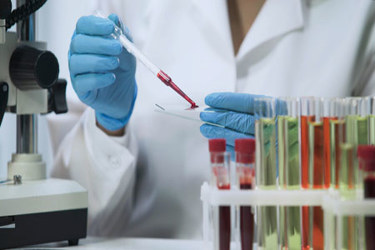Establishment Of Historical Control Reference Values Of Cambodian Cynomolgus Macaque Blood Gases
By Jean Christophe Queudot, Anthony Celori, Brianna Havens, Desiree Orrantia, and Julie Forget

Measuring blood gases is a valuable tool in identifying drug-related respiratory changes, particularly alterations in the diffusion of gases from the lungs into the bloodstream. For small molecule pharmaceuticals, the International Council for Harmonisation (ICH) S7 guidelines identify hemoglobin oxygen saturation (sO2) as a key parameter in the core respiratory battery, with other blood gases such as partial pressure of oxygen (pO2) and partial pressure of carbon dioxide (pCO2) offering additional insights for supplemental assessments. However, there is a lack of comprehensive data on the normal blood gas ranges in cynomolgus macaques, which hinders the ability to assess drug-related effects in this species.
To address this gap, arterial blood gas samples were collected from 98 male and 94 female cynomolgus macaques, all of which were test-article naïve. All samples were collected while the animals were conscious and restrained. The analysis revealed no significant differences between males and females for most parameters. Specifically, the mean sO2 and pO2 values were 97.7% and 94.9 mmHg, respectively, for both sexes, while the mean pCO2 values were 30.9 mmHg for males and 32.2 mmHg for females. This study provides essential baseline blood gas data for cynomolgus macaques, aiding in the assessment of drug-related respiratory effects in this species.
Get unlimited access to:
Enter your credentials below to log in. Not yet a member of Drug Discovery Online? Subscribe today.
